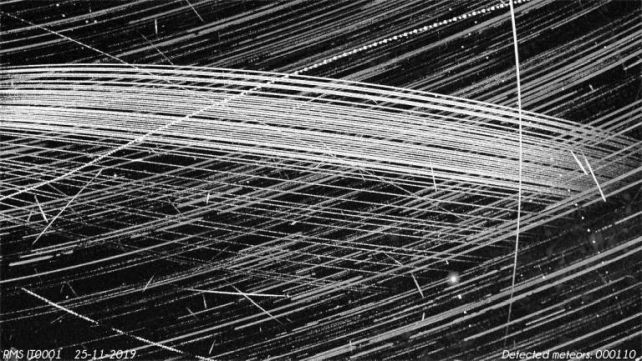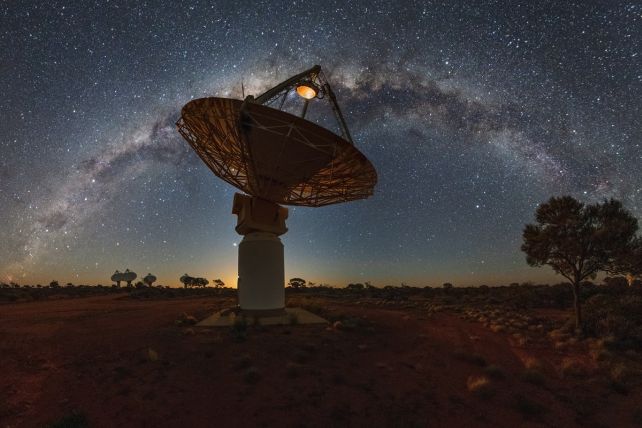Constellations of satellites swarming Earth's orbital skies are currently polluting wavelength bands that are supposed to be protected for radio astronomy.
According to new research, the electronics on board SpaceX's Starlink satellites are 'leaking' low-frequency radio waves, separate from their allocated downlink bands, in a way that could impact our ability to perform astronomy.
"This study represents the latest effort to better understand satellite constellations' impact on radio astronomy," says engineer Federico Di Vruno of the SKA Observatory and the International Astronomical Union.
"Previous workshops on Dark and Quiet Skies theorized about this radiation, our observations confirm it is measurable."
As Earth's skies grow more crowded, the effect satellites have on our study of space becomes more and more of a concern. Currently, SpaceX has an estimated 4,365 of their small internet satellites in Earth orbit, with thousands more planned. And they're not the only company. OneWeb has over 600. Amazon plans to launch thousands more starting in 2024.
SpaceX did listen to concerns about visible light pollution and designed a new, dimmer satellite. But visible wavelengths only represent one kind of Earth-based astronomy. The other, arguably much bigger branch is radio astronomy, and herein lies what might be a problem.
The radio frequencies between 10.7 and 12.7 gigahertz are used by the satellites for communication downlink, at least in Europe; researchers have already expressed concerns about those.
But scientists thought the satellites might be giving off unintended radio waves outside that band. This is what Di Vruno and his colleagues sought to investigate.
They used the LOw Frequency ARray (LOFAR) in Europe, a network comprising around 20,000 radio antennas distributed throughout 52 locations. With this level of sensitivity, they observed 68 satellites belonging to the Starlink constellation. Sure enough, they detected electromagnetic leakage.

"With LOFAR, we detected radiation between 110 and 188 MHz from 47 out of the 68 satellites that were observed," says astronomer Cees Bassa of ASTRON, the Netherlands Institute for Radio Astronomy.
"This frequency range includes a protected band between 150.05 and 153 MHz specifically allocated to radio astronomy by the International Telecommunications Union."
This emission appears to be unintentional, coming from the satellites' electronics. It's also not breaking any rules. Here on Earth, the International Electrotechnical Commission places stringent restrictions on electrical devices to control electromagnetic interference, but those rules don't apply in space.
The effect is relatively small, so far. But it won't necessarily always be that way. The more satellites up there emitting this unintentional radio signal, the brighter it will become.

There is, however, a solution already in the works. The researchers have contacted SpaceX, which is working on ways to reduce or remove this unintentional leakage. And although there are thousands of machines up there already, we're really only at the beginning of satellite constellation technology.
This makes satellite radio leakage a problem that has been caught relatively early. Future designs can be adjusted accordingly while regulators work to fill the unexpected gap in official rules.
"The present study highlights an example of the various channels of how technology development may have unforeseen side effects on astronomy," says astronomer Michael Kramer of the Max Planck Institute for Radio Astronomy and the Astronomische Gesellschaft in Germany.
"With SpaceX setting an example, we are now hoping for the broad support from the whole satellite industry and regulators."
The research has been published in Astronomy & Astrophysics.
